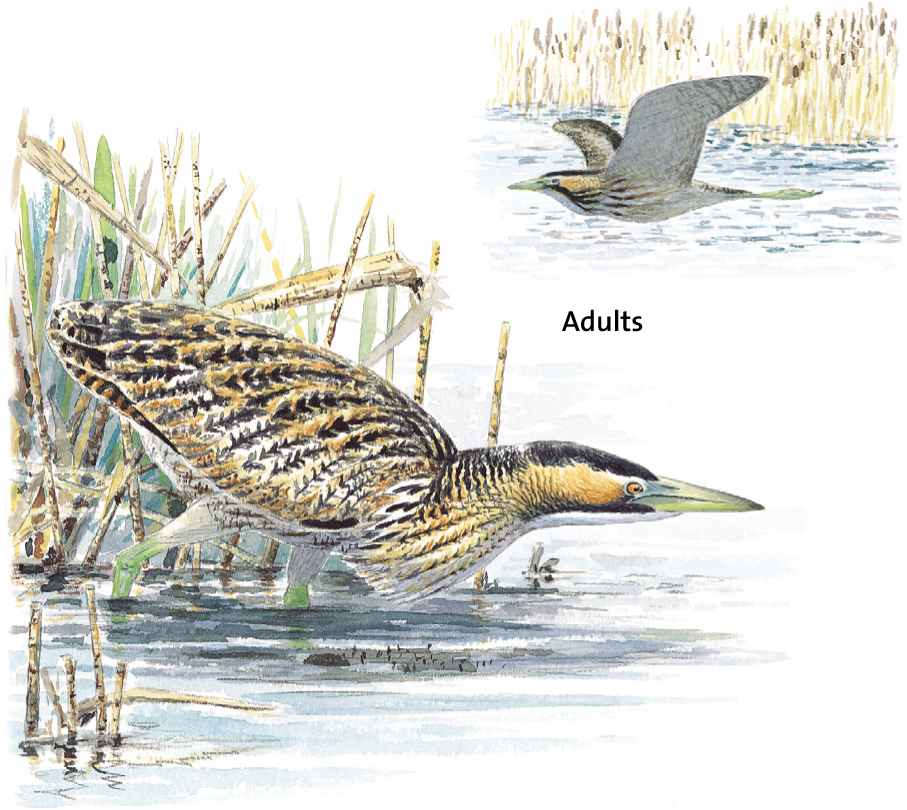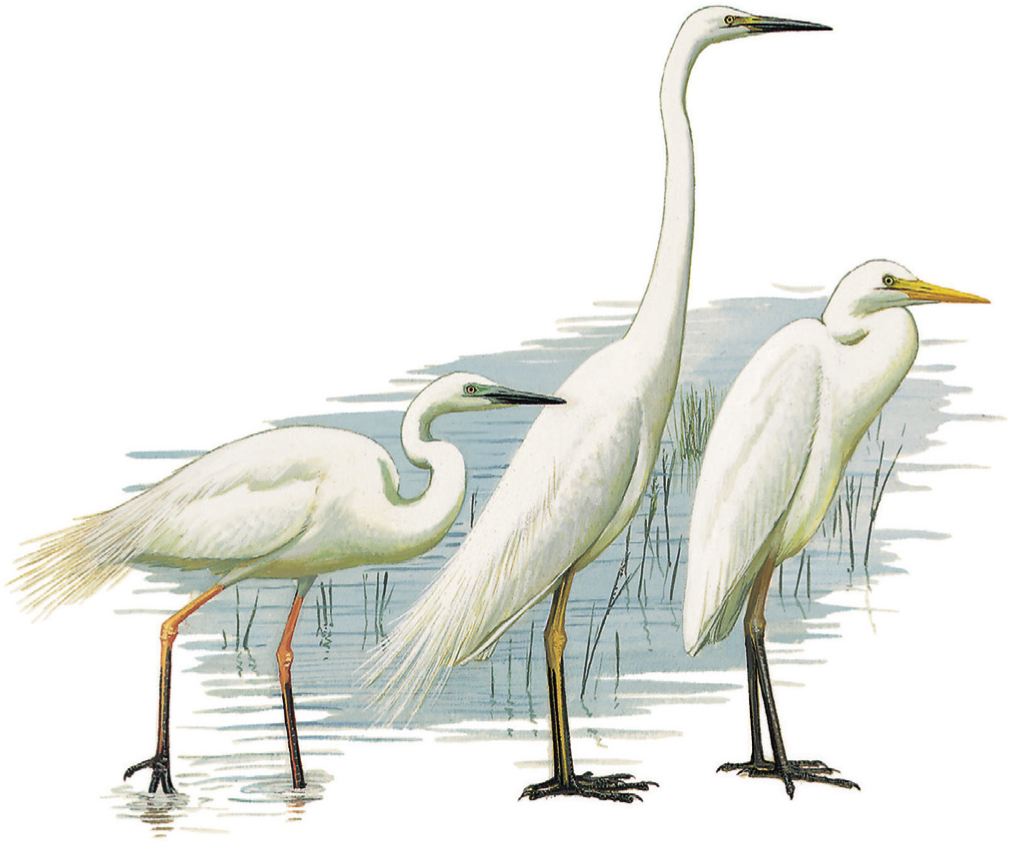
Bittern
Botaurus stellaris

SIZE AND DESCRIPTION
75cm. Plumage brown marbled and striped with buff and black, offering good camouflage against dead reeds in its habitat. Freezes in an upright position when alarmed.
VOICE
In spring male utters a far-carrying booming ‘woomb’ or ‘oo-hoo-oomb’, like a foghorn, mainly at night. Call in flight a barking ‘cow’.
HABITAT
Large freshwater reed beds year-round in much of central Europe. Rare breeding bird in Britain, mainly extensive coastal reedbeds in east England, more widespread in winter.
FOOD AND HABITS
Diet consists of fish, frogs, insects, small mammals and birds, and snakes. Hunts by walking slowly among plants, lifting its feet high with each step. Nest a reed platform among reeds. Declined alarmingly in the 1990s, but recent successful conservation measures have resulted in an encouraging increase in the population.
Little Egret
Egretta garzetta

SIZE AND DESCRIPTION
60cm. A very graceful white heron. Black bill and black legs with yellow toes. Long white plumes on nape and back in breeding plumage.
VOICE
Flight call is a harsh ‘ktchar’.
HABITAT
Estuaries, marshes, rivers, saline lagoons and other shallow water bodies. Local in southern and central Europe. Increasingly common in Britain and Ireland since the 1990s, and now a common resident along coast in much of England and Wales.
FOOD AND HABITS
Diet consists of various animals such as small fish, amphibians and insects. Nests colonially in bushes near wetlands.
Great White Egret
Ardea alba

SIZE AND DESCRIPTION
90cm. Large, elegant white heron, similar size to Grey Heron but slimmer, with very long, slim, serpentine neck and proportionately short bill (yellow in winter, darkens in summer). Feet and lower legs black, legs paler close to body. Breeding birds have elongated fine plumes on lower back.
VOICE
Low-pitched grunts and caws in the breeding season.
HABITAT
Scattered breeding distribution across southern Europe. Scarce but increasing winter visitor to mainly southern Britain, occasionally breeds. Low-lying marshy wetlands. Nests in trees, bushes or reedbeds.
FOOD AND HABITS
Takes fish, frogs and other small animals. Stalks prey or waits motionless before striking. May roost with other herons.
Grey Heron
Ardea cinerea

SIZE AND DESCRIPTION
95cm. Very large and mainly grey, with black-and-white markings. Breeding plumage includes long black plumes on head. Neck is tucked back in flight; wingbeats are slow and ponderous.
VOICE
Flight call a hoarse croaking ‘kraark’ and ‘chraa’; bill-clapping at nest.
HABITAT
Year round in marshes, ponds, lakes, rivers, canals, flooded fields and estuaries throughout Europe.
FOOD AND HABITS
Feeds on fish, amphibians, small mammals, insects and reptiles. Hunts by stalking slowly through shallow water, or standing motionless waiting for prey to come within reach, when it strikes with lightning speed. Nests in colonies, usually high in tall trees, in a huge nest.